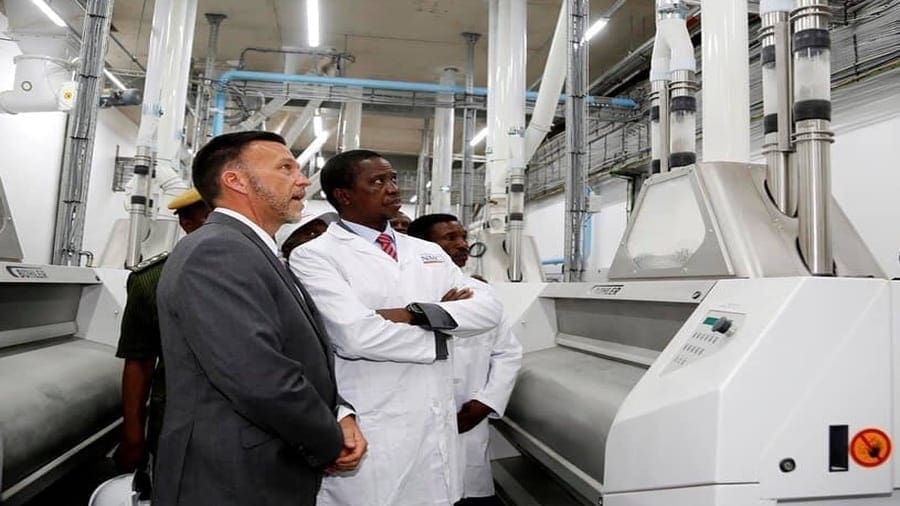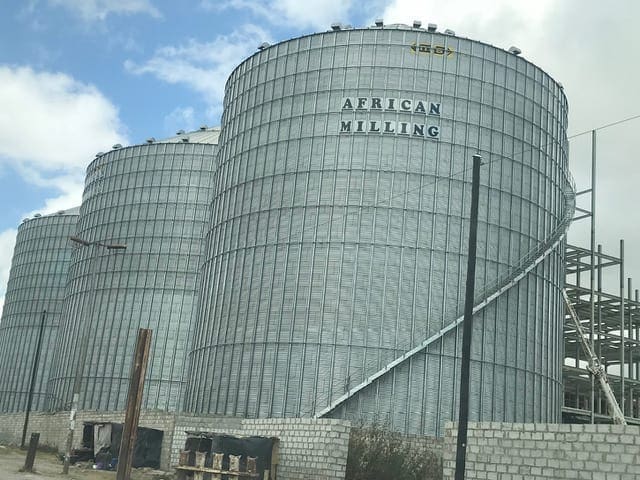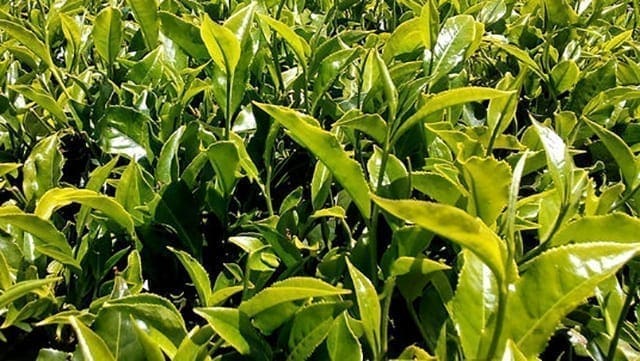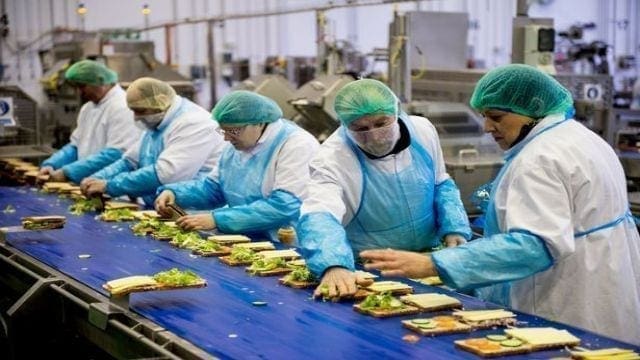The Southern African country of Zambia’s huge agriculture potential has been discussed for decades. Rich and fertile agricultural land that has been idle since times immemorial, vast quantities of water resources (40% of the southern Africa region) and low population in comparison to the land size have been key points of discussion, whenever Zambia’s unmet potential comes up for debate within the country and the region.
Add to the mix the country’s perfect location between the higher population and richer economic eastern and southern Africa countries such as Kenya, South Africa and the Democratic Republic of Congo, and you have a potent mix of advantages and opportunities that the country could tap into to move its agricultural potential to a new level.
Over the last decade, Zambia has increasingly seen its agricultural production and investments in the food and agro value chain increase substantially, with analysts foreseeing better prospects for the country in one sector where the country stands to be a key stakeholder in the region for a long time to come – the grains sector.
Maize production and consumption grows
According to Zambia’s Agriculture Minister Michael Katambo, a bumper crop of maize is forecasted in the current 2019/2020 agricultural season, with over 3.4 million metric tonnes (MT), a significant 69% increase over the past season’s 2 million MT, that was marred with drought and disease outbreak that hit the country and the Southern African region.
According to statistics from the US Department of Agriculture, from 1990 to 2008, Zambia’s maize production stagnated at about 1.2 million MT per year, registering nearly two decades of loss in the race to the country’s quest to become one of Africa’s largest maize producers. However, the country registered the first significant turn of events in 2009, when it harvested 1.9 million MT, after which it had another jump to 2.8 million MT in 2010.
The country did not look back, recording 3.35 million MT in 2014 before recording its best ever crop of 3.6 million MT in 2017. The devastating drought of 2017-19 slammed the brakes on Zambia’s ascent in maize production, when the harvest came down to the lowest figures in a decade of 2 million MT.
Local consumption of maize in Zambia has been rising in tandem with that of local production, from a low of 1.2 million MT in 2008, doubling to 2.5 million MT in 2014, before easing a bit to 2.1 million MT in 2019. Another growing utilization area is that of maize used in formulating animal feed, that has risen from a low of 50,000 MT in 2018 to a high of 500,000 metric MT per year between 2011-16.
Recent drought conditions and a fall in maize production constrained the sector during the 2017-19 period, when the quantity of maize used by the sector fell to a low of 370,000 metric MT in 2019.
Zambia’s increasing domestic production has enabled the country to become a significant player in the regional maize sourcing market, with the Democratic Republic of Congo (DRC) and Zimbabwe especially gaining from importing significant quantities of maize and milled maize meal from Zambia in recent years.
Further afield, Kenya and other Eastern African countries have over the last five years began to source maize from Zambia during lean times, to fulfill gaps created by below-par maize production in their countries.
As the 2019-20 season comes to an end and harvests come in, the Ministry projects that 3.4 million metric tonnes of maize will be realized, with 1.6 million MT being used for human consumption, 1 million MT bought by strategic grains reserve agency and 409,000 MT will be availed for industrial requirements, including for animal feed production.
The Ministry reveals that the country is expected to have a surplus of 210,000 MT, which will be available for export into the regional markets.

Wheat and other crops become important
Zambia’s wheat production has almost followed the trajectory of its maize production, accelerating from 2008, when the country harvested 113,000 tonnes, which eventually hit its all time high of 274,000 tonnes in 2013, before sliding to 152,000 tonnes in 2019.
The FAO GIEWS report projects that in 2019-20 season, wheat production will rise nearly 12% to 170,000 tonnes – a significantly lower increase than that of maize, due to the power outages that the country experienced this year, exacerbated by the long drought that depleted water reservoirs, and in turn, electricity generation in the country.
According to Andrew Chintala, the President of the Millers Association of Zambia, the country’s milling industry association, wheat remains a crop grown by large commercial farmers in the country who require access to power to run their irrigation and other farm systems.
Zambia’s wheat consumption figures have stagnated at about 250,000 metric tonnes for the last decade, mainly due to high wheat flour prices in contrast to a substantially low consumer incomes that have depressed adoption of wheat based products including bread, that are substituted with locally available grains such as maize, tubers and other food products.
Despite a stagnation in wheat consumption, the country relies on the expensive imports of wheat grain, which this year are projected to hit 100,000 tonnes by MAZ, to fill the gap that continues to grow between local production and the consumed quantities.
Another crop that has received a boost in Zambia is soya beans, as the country’s demand for animal feed, high protein meals and cooking oil rises in tandem with population growth, where the country has become a significant regional player.
According to the USDA, Zambia’s soya bean production has risen from a paltry 57,000 MT to 351,000 MT in 2017, before dipping to 281,000 MT in 2019. The country expects to see a small increase in its soya bean crop, with a 6% rise in production to 297,860 MT in the 2019-20 season, while sunflower will record a 4.7% increase – as the country grapples with increases in cooking oil prices locally as a result of the Covid-19 pandemic.
The country, even as it struggles to meet its local demand for soya bean seeds and soya cake, a critical input into animal feed industry, has also become a significant exporter of the two commodities into the regional market, including into Zimbabwe, DRC, Botswana, South Africa and other countries.
However, the Poultry Association of Zambia (PAZ) Executive Manager, Mr. Dominic Chanda has called on Government to trade cautiously when exporting maize and soya beans this season to enable local soya bean crushers and animal feed makers to utilize the crop – and only export value added products. The Millers Association, especially following the uncertainty brought by the Covid-19 pandemic, has raised the same call.
“We need to secure the maize and soya beans we have produced and minimize exports to avoid the situation we faced last year. I am appealing to the Ministry of Agriculture and the Ministry of Livestock and Fisheries not to allow exports at this stage. If we start exporting early, we may have a shortage and the prices of stock feed will be hiked, thereby negatively affecting the small-scale poultry farmers who are growing chickens and this might affect the consumers,” Chanda said.

Protein demand boosts investments
Zambia has experienced a significant growth in its demand for protein, where fish used to make up about 55% of the animal protein consumption, followed by chicken, but where chicken now reigns supreme as demand continues to rise in the country.
According to the World Atlas, Zambia has experienced impressive growth in poultry meat consumption over the years, with production of poultry meat increasing from 13,984 tonnes in 1984 to 49,487 tonnes in 2018, growing at an average annual rate of 4%.
Annual chicken production has increased from 13 million to 43 million in 2018, reported the Poultry Association of Zambia, and as a consequence, the poultry industry now makes up 42% of the livestock agriculture, making it the largest livestock industry in the country, paced by the rise in prices of beef and other protein products in the country.
The Association’s Executive Manager Dominic Chanda had in 2016 estimated that the chicken sector was set to grow to more than 80 million birds by 2020 (from 68 day-old chicks and 150 million eggs produced in 2016) due to the number of new entrants into the sector, but two seasons of severe drought across southern Africa and outbreaks of disease including bird flu, could have dented the sector’s hopes significantly.
The rise in poultry demand and production has seen a huge surge of investments in the poultry value chain in the last 15 years, including in hatcheries including Hybrid Poultry, Zamhatch, Tiger Chicks, Ross Breeders, Quantum Foods, Panda Hatcheries and Chipata Hatcheries; and poultry processors such as Zamchick, Verino, Crest chicken, Southern Chicken, Supreme Chickens and Copperbelt Chicken, among others.
Investments in grain sector rise
The growth in production of grains and oilseeds like soya beans and sunflower in Zambia has attracted significant investments by local, regional and international players into its milling and baking; meat, poultry and fish; and animal feed manufacturing sectors – changing the landscape of the country in a short span of time.
According to MAZ, Zambia has a total number of 78 grain milling operations: 20 large scale, 27 medium scale and 31 small scale millers located in the four provinces of Lusaka, Copperbelt, Northern Province and Central Province, processing mainly maize into local favourite mealie meal, a local delicacy. A few players in the sector mill wheat and crush soya beans.
The National Milling Corporation, an affiliate of American agribusiness and transport conglomerate, Seaboard Corporation commissioned a new US$37.5 million milling plant in 2019 in Lusaka, Zambia, with a capacity to mill 600 metric tonnes of wheat per day, replacing its ageing mill in the City.
It plans to start maize milling at the new plant in 2020. African Milling Limited, one of Zambia’s major integrated wheat and maize flour milling operations also commissioned its newly installed maize mill with a capacity of 336 MT per day plus 50,000 MT storage capacity in 2019, increasing the miller’s capacity from the previous 168 MT per day, which was commissioned in 2006.
It also operates a 120 MT per day wheat mill plant since 2010. Another significant player in the milling sector is Pembe Zambia, which operates a wheat flour, maize meal and soya bean crushing plant in Lusaka.
Zambia’s leading agribusiness enterprise, Zambeef is another key player in the grains sector. Novatek, its animal feed division, opened a US$10 million modern plant in 2017 located at Mpongwe, in the northern part of the country, mainly to serve its vast demand from its poultry, dairy and feedlot operations dotted across the country.
Mount Meru Millers Zambia is another grains sector giant in Zambia, with a versatile plant that processes soya beans, sunflower and cotton seed with a 250 MT per day refinery plus an expeller with a capacity of 250 MT per day installed in 2018.
Global Industries Limited (GIL) has also joined the investment craze in Zambia’s soya bean value chain, investing US$20 million to expand its processing plant in 2018 to double its edible oil production capacity to 100,000 tonnes a day, on top of the US$14 million investment it had made in 2016 in its plant.
Other investors in the animal feed sector in Zambia, apart from National Milling and Novatek include Pembe Milling, Tiger Animal Feeds, Nutrifeeds, Simba Milling, Olympic Milling among others.

Aquaculture shines
From being a country that had failed to tap into its vast water resources to venture into the lucrative aquaculture sector for many decades despite huge local demand, Zambia has become a significant regional player in the sector in southern Africa region, joining the Continent’s leading producer Egypt, Nigeria, Ghana, Uganda and Kenya.
According to a report by CGIAR, by 2014, aquaculture in Zambia grew to a total output of 20,000 tonnes, with 75% of production coming from the commercial sector: intensive pond-based rearing units and cage culture.
Zambia is the biggest producer of tilapia in the South African Development Community (SADC), and some of the largest freshwater commercial farms in Africa operate in Zambia, according to FAO. The value chain is made up almost entirely of tilapia, and in recent times, there have been large investments made into the seed and feed sectors.
Aimed at enhancing the aquaculture feed sector, Danish fish feed manufacturer Aller Aqua in 2017 opened a new factory worth US$10 million as part of the company’s plan to invest in the aquaculture industry sector in Zambia.
The factory, with a capacity of 50,000 tonnes per annum of feed, was established as a joint venture with Oakfield Holdings Limited where Aller Aqua has an off-take agreement with fish company Yalelo Limited, the leading producers of tilapia the country. The plant was Aller Aqua Group’s second plant in Africa, after an earlier one in Egypt.
The sector has witnessed further funding in recent years, with Yalelo becoming a darling of investors who are pulled in by the firm’s aggressive growth, and increasingly, regional ambitions into Eastern Africa, where it says it can find better growth prospects and margins.
In 2019, the firm secured a US$10.5 million funding from Dutch development bank FMO, which was soon followed by the investment of US$6 million equity investment by Finnfund, the Finnish development financier.
The firm’s leader, Adam Taylor, said the funding will more than double its production capacity from 12,000 tonnes to 25,000 tonnes per year while also expanding its processing and retail footprint.
But Yalelo is not alone. Other notable investors in the sector include Kafue Fisheries and Kariba Harvest; a subsidiary of Zimbabwe based Lake Harvest.
The grains sector has grown its tentacles to touch the length and breadth of the economy in Zambia over the last decade or more. It will be interesting to see how the sector will impact the country and surrounding countries in the next decade to 2030.
This feature appeared in the May/June issue of Food Business Africa magazine. You can access the article and many more stories HERE










